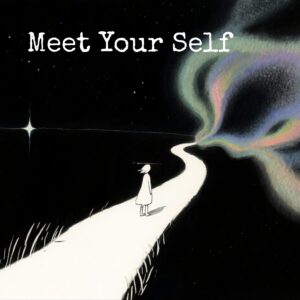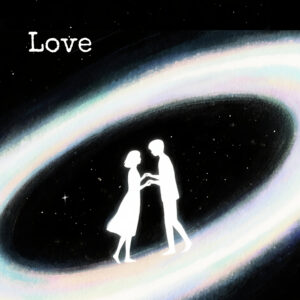Die Morgendämmerung eines neuen Kosmos
Im frühen 17. Jahrhundert, als Europa die Sterne noch als Symbole göttlicher Absicht deutete, Galileo Galilei (1564–1642 n. Chr.) richtete sein Teleskop gen Himmel – und veränderte für immer die Art und Weise, wie die Menschheit ihren Platz im Universum sah.
Galileo Galilei, Mathematiker, Physiker und Astronom, ist in Erinnerung geblieben als Vater der modernen Wissenschaftdoch seine Beziehung zu Astrologie und Kosmologie war komplexer, als der Mythos des reinen Rationalismus vermuten lässt.
Er stand am Scheideweg zweier Welten: der verzauberter Kosmos der Astrologie und die mechanisches Universum der empirischen Wissenschaft.
Sein Leben und Werk markieren den Moment, als der Himmel aufhörte, nur noch metaphorisch zu sprechen, und begann, seine Struktur durch Messung zu offenbaren.
Frühes Leben und Ausbildung
Geboren in Pisa, ItalienGalileo studierte Medizin an der Universität Pisa bevor er sich der Mathematik und der Naturphilosophie zuwandte.
Wie viele Gelehrte seiner Zeit wurde er in beiden Bereichen ausgebildet. Astronomie und Astrologie, die als komplementäre Disziplinen galten.
Als Professor an PaduaEr erstellte Horoskope für seine Schüler und Gönner, darunter auch für die Medici-Familie—eine gängige Praxis unter Intellektuellen der Renaissance.
Doch Galileis unruhiger Geist suchte bald nach tiefergehenden Beweisen. Wo frühere Astrologen Symbole deuteten, suchte er Gesetze; wo sie Vorzeichen beobachteten, maß er Bewegung.
Das Teleskop und der enthüllte Himmel
Im Jahr 1609 baute Galilei sein erstes Teleskop und richtete es auf den Nachthimmel. Was er sah, widersprach jahrhundertealten aristotelischen und ptolemäischen Vorstellungen:
Der Mond war keine perfekte Kugel, sondern von Bergen und Tälern durchzogen.
Jupiter besaß vier eigene Monde, die ihn wie Miniaturplaneten umkreisten.
Die Milchstraße bestand aus unzähligen Sternen, die mit bloßem Auge unsichtbar waren.
Die Venus zeigte Phasen wie der Mond, was beweist, dass sie die Sonne umkreist.
Diese Entdeckungen erschütterten die geozentrisches Modell und boten starke Unterstützung für Kopernikus' heliozentrische Theorie.
Doch Galileo sah darin keine Ketzerei; für ihn bestätigten die neuen Himmel lediglich die Majestät der göttlichen Schöpfung.
Er schrieb:
„Die Naturgesetze sind in der Sprache der Mathematik verfasst.“
Für Galilei war das Studium des Kosmos ein Akt der ehrfürchtige Anfrage—der Versuch, Gottes Handschrift in der Geometrie der Sterne zu lesen.
Galileo und die Astrologie
Anders als oft angenommen, lehnte Galilei die Astrologie nicht gänzlich ab.
In seiner Jugend verfasste er Horoskope und glaubte, dass himmlische Einflüsse das körperliche Temperament und die Wettermuster prägten.
Doch mit zunehmender Reife seiner wissenschaftlichen Arbeit begann er zu Astrologie durch die Naturphilosophie neu interpretieren, indem sie Aberglauben ablehnten, aber die Idee der kosmischen Sympathie beibehielten.
Für Galilei wirkten sich die Planetenbewegungen nicht durch mystische Strahlen auf die Welt aus, sondern durch mechanische Kräfte und natürliche Harmonien.
Er kritisierte Scharlatan-Astrologen, die die Ängste der Bevölkerung ausnutzten, glaubte aber weiterhin, dass der Kosmos eine göttliche Ordnung zum Ausdruck bringe – ein Glaube, der seiner gesamten wissenschaftlichen Methode zugrunde lag.
In einem Brief bemerkte er, dass die Astrologie „einen Hauch von Wahrheit“ enthalte, ihre tieferen Gesetze aber noch durch Mathematik und Vernunft entdeckt werden müssten.
Die Kirche und der Prozess
Im Jahr 1632 veröffentlichte Galileo Der Dialog über das ganze Weltsystem (Dialog über die beiden wichtigsten Weltsysteme), indem er das heliozentrische Modell in einer lebhaften philosophischen Debatte verteidigte.
Obwohl er Neutralität beanspruchte, sprachen seine Argumente eindeutig für das kopernikanische System, das der Auslegung der Heiligen Schrift durch die Kirche widersprach.
Im Jahr 1633 Inquisition Er wurde wegen Ketzerei angeklagt. Galileo wurde gezwungen, seine Lehren öffentlich zu widerrufen und verbrachte seine restlichen Jahre unter Hausarrest. Arcetri, in der Nähe von Florenz.
Der Legende nach flüsterte er, als er von den Knien aufstand: “E pur si muove”—„Und dennoch bewegt es sich.“
Sein Prozess symbolisierte nicht den Triumph der Wissenschaft über die Religion, sondern die tragische Spannung zwischen zwei Visionen der WahrheitOffenbarung und Beobachtung.
Der Kosmos neu gedacht
Galileis Genie bestand darin, kosmisches Wunder in messbare Gesetze übersetzen.
Wo Astrologen einst göttliche Botschaften sahen, sah er mathematische Beziehungen—aber er hat ihnen nie ihre Ehrfurcht genommen.
Er entwarf die Vision eines Universums, das von Harmonie, Proportion und Geometrie beherrscht wird – denselben Idealen, die inspirierten Kepler Und Ficino.
Tatsächlich hat Galileis wissenschaftliche Revolution den heiligen Kosmos nicht ausgelöscht; sie neu definiert.
In seinem Universum wurde Gottes Gegenwart nicht mehr aus Prophezeiungen, sondern aus Präzision abgeleitet.
Der Himmel sprach nicht durch Zeichen, sondern durch Zahlen – und Zahlen waren für Galilei selbst göttlich.
Vermächtnis: Von der Astrologie zur Astronomie
Galileis Arbeit legte den Grundstein für moderne Physik und beobachtende Astronomie.
Er schlug eine Brücke zwischen der mystischen Kosmologie der Renaissance und dem rationalen Empirismus der Aufklärung.
Obwohl er die Astrologie als Vorhersagewissenschaft widerlegte, bewahrte er ihre zentrale Intuition: dass sich Kosmos und menschlicher Geist in Struktur und Gesetzmäßigkeit gegenseitig widerspiegeln.
Jahrhunderte später seine Verschmelzung von Glaube, Mathematik und Staunen prägt weiterhin den Geist der wissenschaftlichen Forschung.
In Galileis Universum bedeutete die Kenntnis der Sterne immer noch die Suche nach dem Göttlichen – nur jetzt durch das Teleskop der Vernunft.



